Combining tradition and modernity in interior design is an art that defies the limits of convention, allowing us to create spaces that reflect appreciation and respect for the past and the importance of innovation in the present. This fusion is not a trend. It is a sophisticated approach in which the principle is the harmonization of classic and contemporary elements, and the result are spaces rich in history but with a fresh and modern touch.
“Good design is about creating a dialogue between the past and the present”
Robert A.M.Stern, American architect
Combining such distinct styles can seem like a huge challenge and a complex task in this symbiosis between past and present. However, with the right techniques and principles and an in-depth knowledge of each style's characteristics, it is possible to achieve the perfect balance between tradition and modernity.
Whether for a residential or commercial project, combining classic and modern is an opportunity to create personalized and timeless spaces. In this article, we explore the differences between the styles and their characteristics and present practical tips for combining them cohesively.

Each person has their own preferences and needs, whether for functionality or aesthetics. Understanding the characteristics of interior architecture styles is not just helpful, it's crucial. It will facilitate the creative process and ensure that your design choices are well-informed and thoughtful.
Traditional style is synonymous with elegance and a solid connection to history. Inspired by eras such as the European Renaissance, Victorian style, or colonial architecture, this design is easily identifiable using carved wooden furniture, ornate shapes, and a rich colour palette like red, dark green, gold, or blue. Elements such as elaborate moldings, luxurious fabrics (velvet and silk), and ornate details are essential. The decorative elements convey luxury: china cabinets, porcelain, silverware, busts, tapestries, paintings, books, lamps, mirrors, floral arrangements, and chandeliers, with yellowish and diffused lighting. These combinations create comfortable, stable areas with a touch of nostalgia.
The traditional approach values symmetry and ornamentation, focusing on the details that make each space feel curated and timeless.
Contemporary style is marked by innovation, simplicity, and a minimalist approach that values the present. Unlike traditional, modern style constantly evolves, reflecting current interior design trends. It is characterized by clean lines, open spaces, and a neutral colour palette, such as white, gray, and black. Predominant materials include glass, metal, and light wood, creating a feeling of lightness and modernity.
Contemporary design stands out for its functionality and uncomplicated aesthetics. It emphasizes natural light and the creation of spaces that enhance well-being and harmony.
Combining tradition and modernity starts by understanding the main differences between these styles since each brings a distinct visual language that impacts the choice of furniture, colours, materials, textures, and accessories. Here are the 5 main differences that you can identify between the two styles:
1. Furniture: classicism vs modernity
Robust, ornate pieces with carved details and luxurious finishes characterize traditional furniture. For example, a table like Goathi from ALMA de LUCE in a dining room creates a sense of refinement and history.
In contrast, contemporary furniture focuses on simple lines, geometric shapes, and functionality. A contemporary dining room might feature a table like Polonceau from ALMA de LUCE, promoting a light and uncomplicated ambiance.
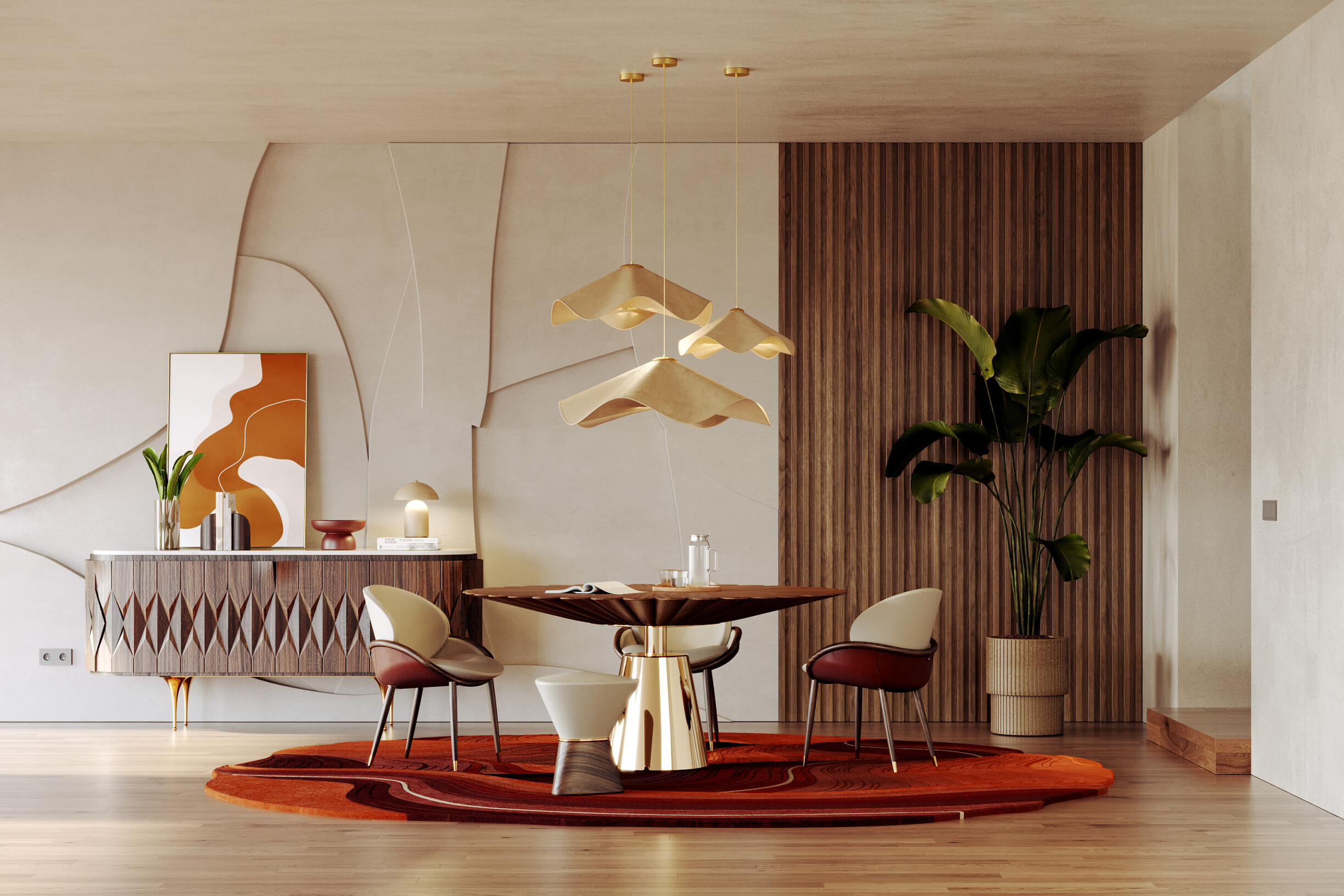
2. Colour palette: rich tones vs. neutral colours
Deep, rich colours like dark red, olive green, or navy blue dominate traditional projects, creating an intimate and welcoming atmosphere. Imagine a classic bedroom with wooden details, a bed like Douro from ALMA de LUCE, and soft lighting. It's a space that invites relaxation and comfort.
Conversely, the contemporary style favors neutral and light colours like white, gray, or beige. A contemporary bedroom can have white walls, gray furniture, and black details, creating a bright area that exudes modernity.
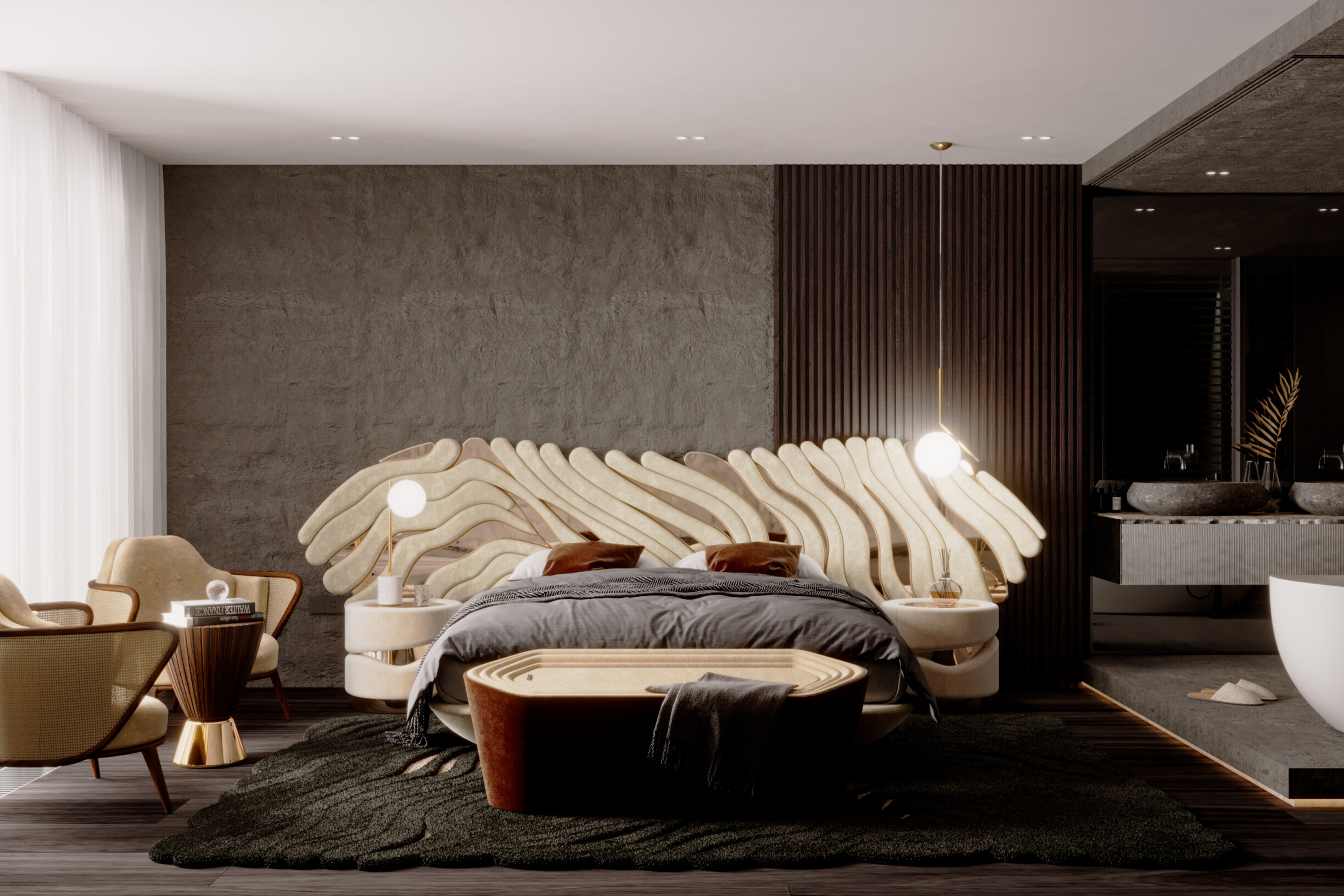
3. Materials: wood and marble vs. glass and metal
Materials such as dark wood, marble, and rich fabrics are expected to create a classic and luxurious feel in traditional spaces.
In contemporary design, there is a preference for materials such as light wood, glass, and metal, ensuring a clean and futuristic space.
4. Textures: luxury vs simplicity
Textures in the traditional style are rich and varied, emphasizing the use of fabrics such as velvet, silk, and brocade. In a traditional living room, velvet curtains, sofas with textured upholstery, and cushions in ornate fabrics create a sense of opulence and comfort.
The contemporary style focuses on soft and minimalist textures like cotton, linen, and synthetic leather. An example would be a living room with a straight-lined sofa in plain fabric, such as Mies from ALMA de LUCE, conveying an uncomplicated and functional space.
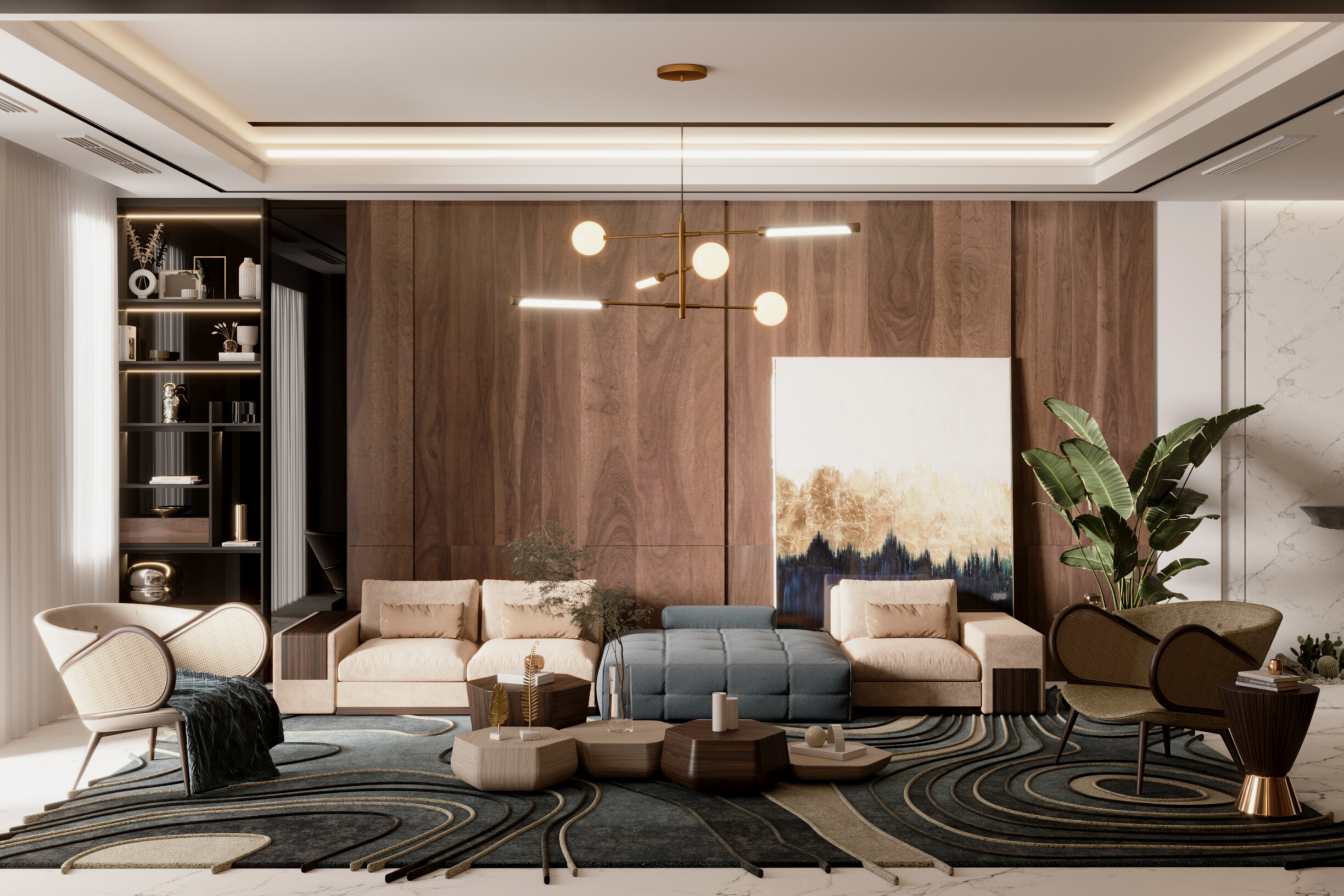
5. Accessories: ornamentation vs. minimalism
Traditional accessories are rich in details, such as crystal chandeliers, gilded mirrors, and classic art pieces. A traditional lobby might include an ornate mirror, a dark wood sideboard, and ornate wall sconces, creating a welcoming, sophisticated ambiance.
In contrast, the contemporary style is minimalist in accessories, favoring abstract art pieces, modern lighting, and understated décor. A contemporary lobby might feature a geometric wall art piece, a clean-lined console table, and recessed lighting, reinforcing the feeling of an organized and modern space.
The art of mixing decorative styles involves carefully combining different elements, resulting in spaces that tell stories and reflect personalities. Combining traditional and modern elements requires a keen eye for harmony and balance. It’s not just about mixing pieces from different eras but about creating a dialogue between the old and the new, where each element complements and enriches the other.
Mixing furniture is one of the most effective ways to combine the two styles. Choose a traditional statement piece, such as the Cinnabar armchair from ALMA de LUCE, and complement it with furniture with modern lines. For example, a contemporary-looking sofa could be framed by a classic coffee table in a living room, creating a contrast that adds personality to the space.
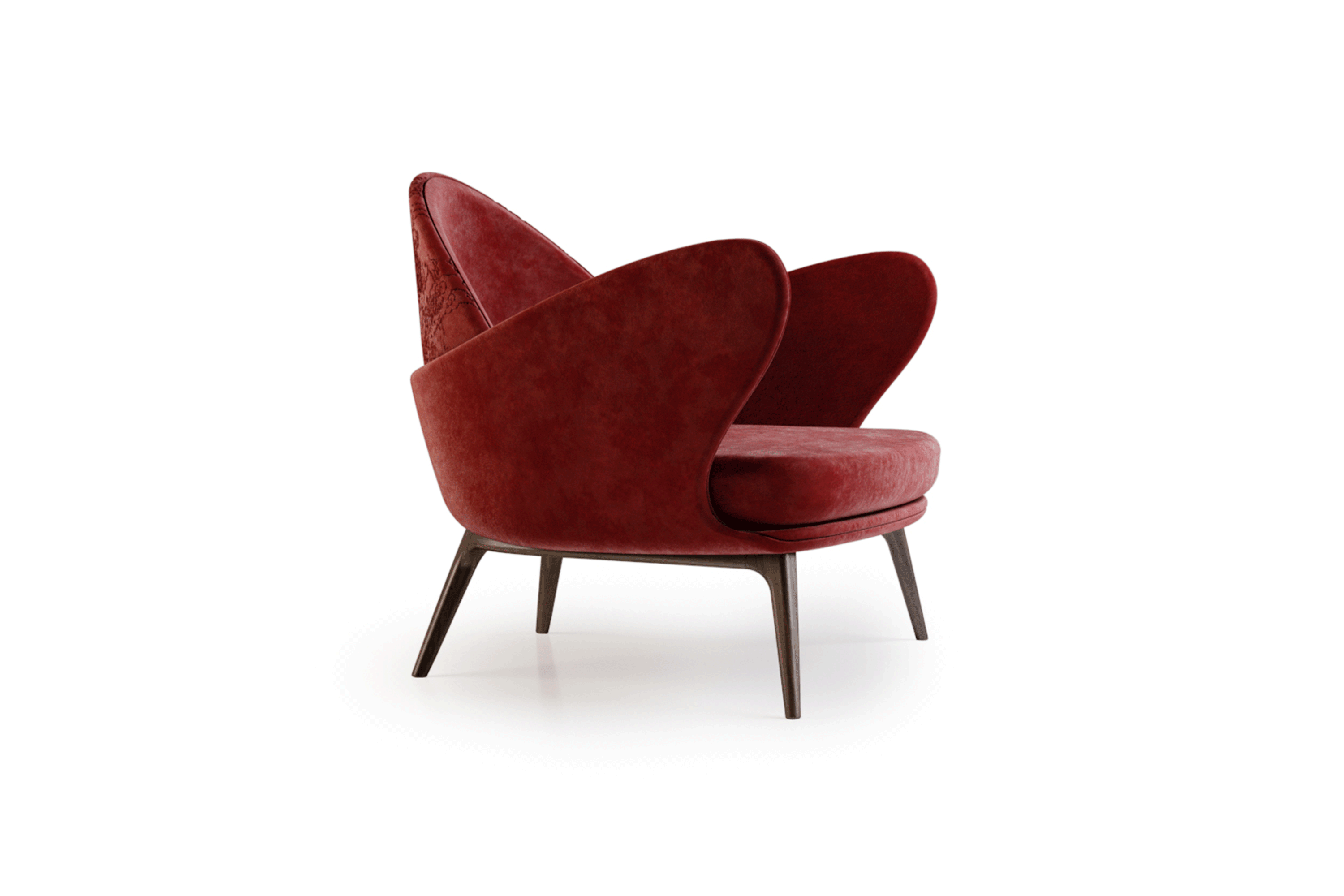
For the fusion of styles to work, the colour palette must be balanced. Use neutral tones as a base to highlight traditional elements. For example, in a dining room with dark gray walls and white accents, a dark wood table and classic chairs could bring a light and modern touch.
Mixing textures is essential to creating a dynamic and interesting space. Combine classic materials like wood with modern surfaces like glass. In a bedroom, you can combine a velvet headboard, like Kintsukuroi bed from ALMA de LUCE, with metal bedside tables, creating a visual play that combines traditional luxury with contemporary simplicity.
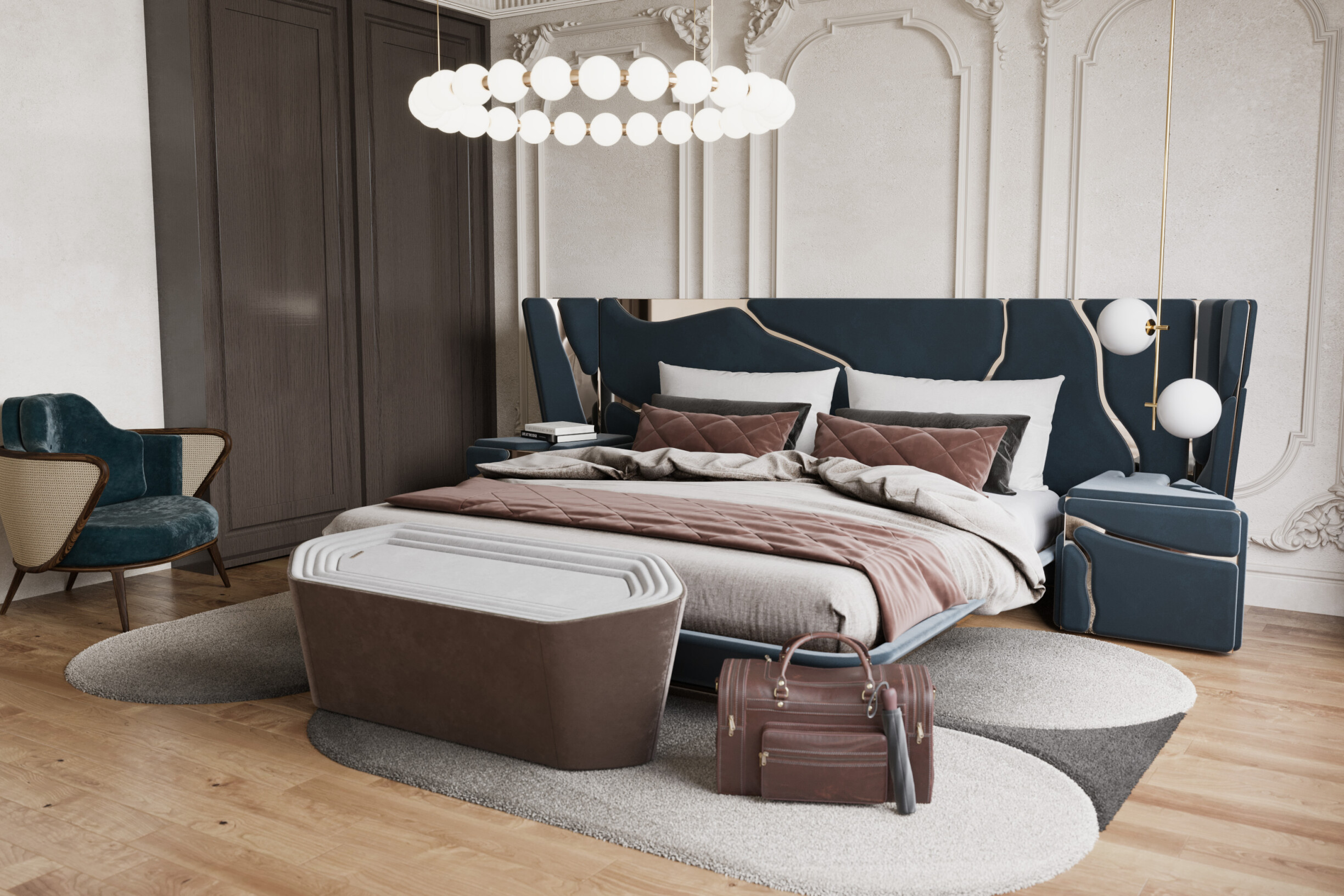
Lighting can be a powerful link in the fusion of styles. Use a classic lamp in the center of the room and complement it with simple lights or recessed light points. In an entrance hall, a vintage lamp combined with modern wall lights creates a visual effect that reflects the union between past and present, highlighting the best of both styles.
We have an extra tip! Start by making a mood board. When we want to combine opposing styles, it is crucial to visualize the elements. That is why a mood board is a very visual representation of your brain piecing together ideas and bringing them together to tell a unique, engaging story.
Do you prefer tradition or contemporaneity? Your interior design projects can include both styles in a perfect combination of something opposite. The most important thing is to guarantee sophistication, functionality, and the client's taste, which is a must these days.
Did you like our tips? Stay tuned to our blog for more information and curiosities in architecture, interiors, and design!
You can also follow us on Instagram, Facebook, and Pinterest to get inspiration about interior architecture styles, furniture, materials, and finishes!